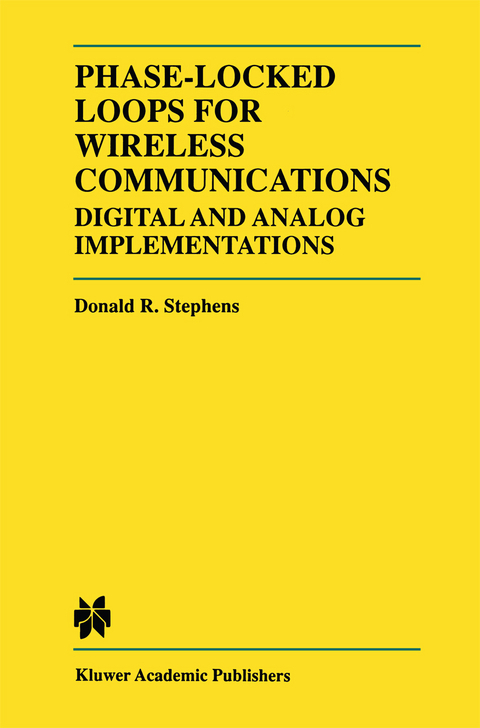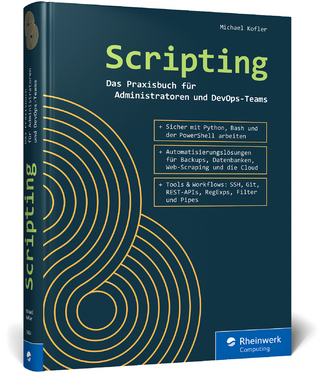
Phase-Locked Loops for Wireless Communications
Springer-Verlag New York Inc.
978-1-4613-7618-7 (ISBN)
1 The Early History of Phase-Locked Loops.- 1.1 History.- 1.2 References.- 2 Analog Phase-Locked Loops.- 2.1 Time Domain Analysis of Phase-Locked Loops.- 2.2 Frequency Domain Analysis of Phase-Locked Loops.- 2.3 Partial Fraction Expansion.- 2.4 First Order Loop Responses.- 2.5 Definition of Loop Order.- 2.6 Second Order Phase-Locked Loops.- 2.7 Third Order Phase-Locked Loops.- 2.8 References.- 2.9 Problems.- 3 Root Locus and Frequency Analysis.- 3.1 Root Locus.- 3.2 Frequency Analysis.- 3.3 FM Demodulator.- 3.4 Noise Bandwidth.- 3.5 Third Order Phase-Locked Loop Design.- 3.6 References.- 3.7 Problems.- 4 Acquisition and Tracking.- 4.1 First Order Acquisition.- 4.2 Second Order Loop Acquisition.- 4.3 Acquisition in Noise.- 4.4 Frequency Sweeping.- 4.5 Acquisition Summary.- 4.6 Summary of Analog Phase-Locked Loop Design Equations.- 4.7 References.- 4.8 Problems.- 5 Digital Transforms.- 5.1 The Pulse Transform.- 5.2 Z Transform.- 5.3 Inverse Z-Transform.- 5.4 Partial Fraction Expansion.- 5.5 Synthetic Division.- 5.6 Modified Z-Transform.- 5.7 Zero Order Hold.- 5.8 References.- 5.9 Problems.- 6 Digital Closed Loop Analysis.- 6.1 Loops With Samplers.- 6.2 Multirate Sampling.- 6.3 References.- 6.4 Problems.- 7 Digital Transformations of Analog Phase-Locked Loops.- 7.1 Analog Loop Transformations.- 7.2 All Digital Loops With Block Elements.- 7.3 Loop Filter Transformations.- 7.4 VCOs.- 7.5 Complete Digital PLL Equations.- 7.6 References.- 7.7 Problems.- 8 Stability and Frequency Response of Digital Loops.- 8.1 Stability.- 8.2 Noise Bandwidth of Digital Phase-Locked Loops.- 8.3 Sampling Rate Effect Upon Loop Bandwidth.- 8.4 References.- 8.5 Problems.- 9 All Digital Phase-Locked Loops.- 9.1 Non-Uniform Sampling.- 9.2 Noise Analysis of the Second Order Loop.- 9.3 Noise Bandwidthof First Order Loops.- 9.4 Components of Digital Phase-Locked Loops.- 9.5 Phase Detectors.- 9.6 References.- 9.7 Problems.- 10 Digital PLL Responses and Acquisition.- 10.1 Linearized Input Responses.- 10.2 Nonlinear Analysis.- 10.3 Phase Plane Analysis.- 10.4 Phase Error Variance.- 10.5 Probability of Acquisition.- 10.6 Probability of Cycle Slip.- 10.7 Nonlinear Analysis of Second Order Loops.- 10.8 Acquisition for Non-Uniform Sampling Phase-Locked Loops.- 10.9 References.- 10.1 Problems.- 11 Synchronizers for Digital Communications.- 11.1 The Synchronization Problem.- 11.2 BPSK and QPSK Synchronization.- 11.3 Lock Detectors.- 11.4 Costas Loops.- 11.5 Timing Synchronizers.- 11.6 Interpolators.- 11.7 References.- 11.8 Problems.- 12 Phase Noise Analysis.- 12.1 Introduction to Phase Noise.- 12.2 Phase Noise in Phase-Locked Loops.- 12.3 Phase Noise of Oscillators.- 12.4 Phase Noise of Dividers.- 12.5 Consequences of Phase Noise.- 12.6 Phase Noise Measurements.- 12.7 References.- 12.8 Problems.- Appendix A Laplace Transforms.- Appendix B Z Transforms.
| Zusatzinfo | XV, 379 p. |
|---|---|
| Verlagsort | New York, NY |
| Sprache | englisch |
| Maße | 155 x 235 mm |
| Themenwelt | Mathematik / Informatik ► Informatik ► Netzwerke |
| Naturwissenschaften ► Physik / Astronomie ► Optik | |
| Technik ► Elektrotechnik / Energietechnik | |
| Technik ► Nachrichtentechnik | |
| ISBN-10 | 1-4613-7618-1 / 1461376181 |
| ISBN-13 | 978-1-4613-7618-7 / 9781461376187 |
| Zustand | Neuware |
| Haben Sie eine Frage zum Produkt? |
aus dem Bereich


